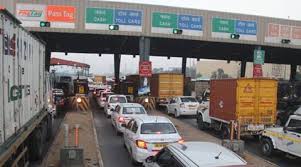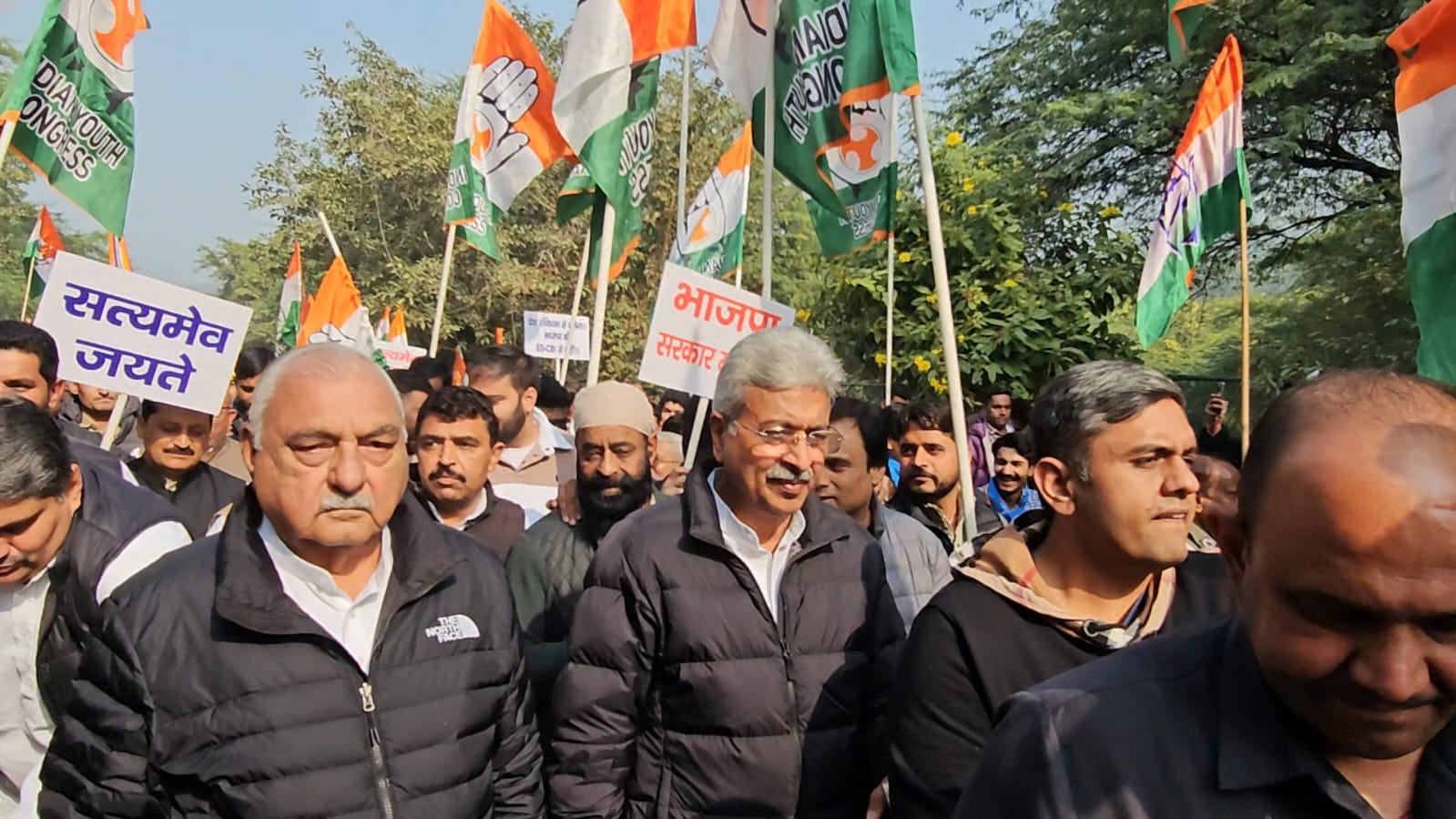Listen To This Post
Written by: Dr.AS MITTAL TheNewsDose.Com
The Golden Temple draws approximately five crore visitors annually. If each of these pilgrims spends an average of ₹5,000 on lodging, food, transportation, crafts, and heritage experiences, Amritsar stands to generate about ₹ 2.5 lakh Cr annually. Moreover, if we can convert just 1% (5 lakh) of these visitors into high-end tourists who are willing to spend around ₹2 lakh each, the potential for additional income skyrockets to an astounding ₹1 lakh Cr—the total around ₹3.5 lakh Cr, about 50% of Punjab’s GDP.
I am not a strict ritualist, but like many, I navigate the balance between reverence and reason. Five years ago, during the serene hours of ‘Amrit Vela’ (around 4:15 AM) at the Golden Temple in Amritsar, I participated in the Paalki Sahib procession, witnessing the Sri Guru Granth Sahib ji being carried from the Akal Takht to the sanctum. In that moment, I entered what felt like God’s own home. The hymns, the still waters of the Sarovar, and the gleaming dome did more than calm my mind; they transformed my understanding of true wealth. At Harmandir Sahib, humility stands as a form of capital, service scales to meet demand, and an inclusive faith becomes an invaluable public good. This public good not only sustains livelihoods but can also propel Punjab’s economic prosperity.
The Spiritual Engine
It is imperative to position Guru Ki Nagari (Amritsar) as the undisputed “Gateway to Spiritual Heritage” on the global stage. By strategically collaborating with the Indian diaspora in Canada, the UK, the US, and Australia, Punjab can draw in a consistent influx of high-value religious tourists, extending beyond the Sikh community. Forming alliances with UNESCO and other premier global heritage organisations will firmly establish our credibility.
The visitor statistics for the Golden Temple highlight this immense potential. Amritsar, on average, welcomes around five crore pilgrims each year. This thriving, 24/7 economy is powered by relentless, faith-driven foot traffic that supports thousands of livelihoods. Consider the parallel success of the Tirupati Balaji Temple (Andhra Pradesh), which attracts over four crore pilgrims every year, contributing over ₹30,000 crore to Andhra Pradesh’s economy, as estimated by the NCAER (National Council of Applied Economic Research).
Punjab has even greater prospects. The Golden Temple alone draws approximately five crore visitors annually. If each of these pilgrims spends an average of ₹5,000 on lodging, food, transportation, crafts, and heritage experiences, Amritsar stands to generate about ₹ 2.5 lakh Cr annually. Moreover, if we can convert just 1% (5 lakh) of these visitors into high-end tourists who are willing to spend around ₹2 lakh each, the potential for additional income skyrockets to an astounding ₹1 lakh Cr— the total around ₹ 3.5 lakh Cr, about 50% of Punjab’s GDP(₹6.98 lakh Cr, 2023-24).
This substantial economic influx, benefiting local communities, has the power to create a significant ripple effect in employment—both direct and indirect—due to the labour-intensive nature of the spiritual tourism sector. The economic impact can surpass achievements in both agriculture and manufacturing across the state. It’s time to harness this potential and transform Punjab’s future.
India’s spiritual and cultural heritage tourism has rebounded sharply, and the tourism industry’s economic footprint is tangible. Union Ministry of Tourism data show religious tourism visits rose from 67.7 Cr (2021) to 143.9 Cr (2024); and recorded 96 lakh foreign tourist arrivals, generating over ₹2.7 lakh crore in foreign exchange earnings.
Nationally, travel and tourism is again a jobs-and-GDP engine. A well-governed Amritsar can capture a larger slice of that momentum as the flagship shrine, Golden Temple, sits atop that wave.
Where Punjab’s Growth Needs a Nudge
Punjab’s economy is structurally balanced but underperforming its potential. In 2024–25, agriculture, manufacturing, and services contributed 29%, 25%, and 46% to the GDP, respectively. Services growth has been the more resilient driver recently—precisely the segment amplified by high-quality, high-volume religious tourism. If Punjab wants faster job creation without environmental stress, leaning into a services-and-experiences strategy around the Golden Temple is the low-hanging fruit.
Amritsar has seen rounds of urban upgrades—heritage streets, innovative City projects, radial road plans—but congestion, waste, and last-mile mobility remain pain points around the shrine precinct. Even advocates of expansion concede that visitor comfort and circulation need ‘transformative infrastructure.’ Addressing these issues will unlock more spend per visitor, longer stays, and higher-value jobs, making the need for these improvements urgent and essential.
A Practical Prosperity Playbook— Rooted in the Golden Temple’s Ethos
1) Treat the Temple Precinct as a “Sacred Services District”
Create a pedestrian-first mobility ring within a defined radius, featuring multilevel parking at city entry points, an electric shuttle loop to and from the precinct, and an underground or grade-separated vehicle corridor, where feasible. Prioritise shaded walkways, accessible ramps, clean public conveniences, and water stations. These upgrades—already outlined in various Smart City and civic proposals—have one goal: to lift dwell time and average spend without eroding the sanctity.
2) Build a Skills Escalator for Local Youth
A “Guru Sewa to Livelihood” academy, co-designed with the SGPC, hospitality schools, and MSME clusters, can professionalise guiding, front-office, housekeeping, food safety, digital ticketing, and basic foreign-language skills. Tourism in India supports tens of millions of jobs; even a small share captured by Amritsar’s ecosystem translates into steady employment for the city’s youth, especially women.
3) Formalise and Finance Micro-Entrepreneurs
Offer easy on-ramp credit and compliance support to Parshadai makers, Karah Prasad supply chains, brassware, phulkari, kada and kirpan artisans, and Amritsari snack brands. A ‘Crafts of Amritsar’ hallmark—QR-coded provenance and fair-wage pledge—can lift margins while protecting heritage artisanship. This engagement with local communities and artisans is not just about economic benefits, but also about preserving and promoting the region’s rich cultural heritage, making them feel included and valued in the proposed initiatives.
4) Curate Spiritually Aligned Experiences
Design a “Sarbat da Bhala” circuit: Harmandir Sahib, Durgayana Temple, Jaliawalan Baag, the Partition Museum, Gobindgarh Fort, BSF and Pakistani Ranger Prade at Wagha border and rural sarson khet experiences—framed not as sightseeing, but as values-in-action: sewa kitchens, music and kirtan workshops, oral histories, and farm-to-thali tours. This initiative increases foot traffic in nearby areas, aligning with the Ministry of Tourism’s ‘Pilgrimage Rejuvenation and Spiritual Heritage Augmentation Drive’ (PRASHAD). The drive boasts a budget allocation of ₹3,296 crores for FY 2025-26, aimed at boosting infrastructure and expanding local earning avenues. Alarmingly, Punjab has received only ₹37.97 crores over the past decade.
5) Cleanliness and Calm as Competitive Advantages
Make zero litter, zero noise the brand standard within the district. Temple volunteers have already established benchmarks in order and hygiene. We can mirror this in civic services, including timed waste collection, discreet surveillance for crowd management, and 24×7 public information screens with queue times, shuttle services, and digital public utilities along the heritage walk.
6) Respectful Night Economy
A curated 7–11 PM window—soft-lit heritage streets with sanctioned street performers (devotional music, folk), khalsa cuisine courts, and artisan bazaars—extends stays, lifts small-business receipts, and keeps it family-friendly.
7) Transparent Metrics and Community Ownership
Publish monthly dashboards: footfall by time band, average stay, MSME sales, jobs created, women’s participation, and cleanliness scores. Tie vendor license renewals to compliance and service quality.
The Way Forward- Peace to Prosperity
That ‘Amrit Vela’, five years ago, when I walked with the Palki Sahib, I felt a stillness that is rare in modern life. The Golden Temple didn’t require a credential, only a willingness to be quiet, to serve, and to share. If Punjab can carry that ethic into the streets around Harmandir Sahib—clean, calm, fair, and welcoming—’ The Guru Ki Nagri’- a world spiritual capital that already feeds a hundred thousand every day, can also feed a million livelihoods with dignity.
Prosperity is not just the sum of transactions. In Amritsar, it is the sum of intentions: ‘Sewa’ that lowers costs,’ Sarbat Da Bhalla’ that widens opportunity, and the ‘Guru’s Sahibaans’ reminding us that growth without grace is just noise. The Golden Temple offers a rare path to peace and prosperity.
–The Author is Vice-Chairman Sonalika ITL Group, Vice-Chairman(Cabinet minister rank)of the Punjab Economic Policy and Planning Board, Chairman of ASSOCHAM Northern Region Development Council. Views expressed in the above opinion piece are personal and solely of the author. They do not necessarily reflect TheNewsDose.com views.














